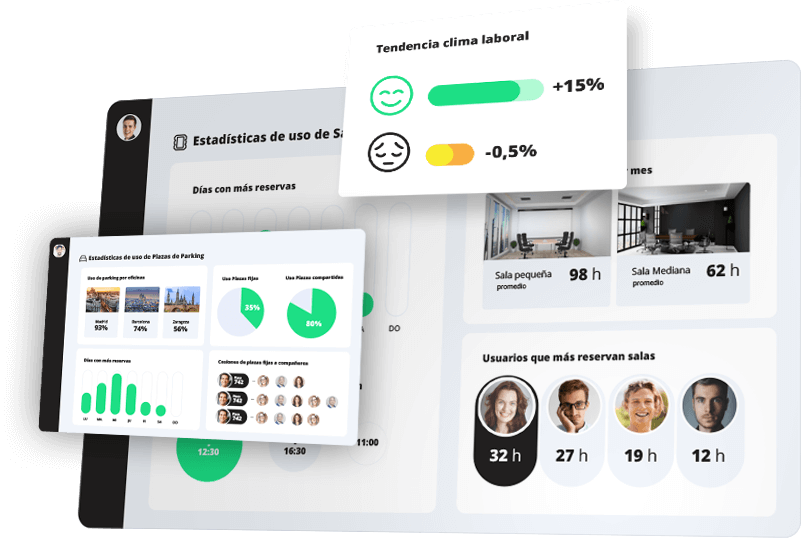
Transform your employee data into meaningful work experiences.



We answer the most frequently asked questions about people analytics so you have no doubts left.
People Analytics is a discipline within the field of human resources that focuses on using data and analysis to make informed decisions about people in an organization. It combines statistics, technology, and HR expertise to manage and optimize a company’s human capital.
In essence, People Analytics involves collecting and analyzing data about employees and their behaviors to improve key processes such as recruitment, retention, talent development, and performance management. The goal is to transform large volumes of data into valuable insights that enable business leaders to make more accurate and strategic decisions.
The data used in People Analytics can include everything from job satisfaction surveys to performance analysis, absence data, employee turnover patterns, and more. These metrics are processed using advanced data analysis techniques to identify trends, correlations, and predictions that can positively influence human resource management.
In summary, People Analytics is a powerful tool that helps organizations better understand their workforce and create a more effective, equitable, and sustainable work environment.
The main goal of People Analytics is to improve decision-making related to talent management within an organization. Through data analysis, People Analytics aims to identify patterns, correlations, and trends that can be used to optimize key HR processes.
Some specific objectives include:
People Analytics consists of several fundamental elements that enable organizations to collect, analyze, and interpret data about their workforce. The key components are as follows:
In the context of People Analytics, data collection and analysis are fundamental processes that transform information into actionable insights for talent management. The key steps in these processes are as follows:
Data collection is the first step in People Analytics and can involve multiple sources and methods. Some common methods include:
Once collected, data must be analyzed to extract valuable insights. The analysis process generally follows these steps:
People Analytics plays a crucial role in improving productivity within an organization. By using advanced data and analysis, it is possible to identify factors affecting employee performance and develop strategies to optimize productivity. Here are some ways People Analytics can influence productivity:
People Analytics allows for the identification of key factors impacting productivity, such as working conditions, workload, employee skills, and organizational environment. By analyzing data on employee performance and satisfaction, organizations can detect what elements are facilitating or hindering productivity.
Using data on employee skills, experience, and performance, People Analytics helps to optimize resource allocation. This means tasks and projects can be assigned to the most qualified and well-prepared individuals to carry them out efficiently, thereby increasing overall productivity.
People Analytics allows for measuring the impact of training programs on productivity. By analyzing how training and skill development influence performance, companies can adjust their training programs to maximize return on investment and improve employee performance.
Employee motivation and engagement are directly related to productivity. People Analytics can analyze data on satisfaction and engagement to identify areas needing attention. By addressing issues related to employee morale, companies can create a more positive work environment that fosters greater productivity.
By examining workflows and operational processes, People Analytics can identify obstacles that are reducing efficiency. For example, it might reveal that certain processes are too complex or that there are bottlenecks in communication. With this information, organizations can implement changes to eliminate barriers and improve workflow.
Through predictive analysis, People Analytics can anticipate changes in productivity and take proactive measures. For example, if it is predicted that productivity might decrease due to seasonal factors or changes in workload, the company can plan ahead and take actions to mitigate these effects.
Finally, People Analytics allows for personalized management, adapting management strategies to individual employee needs. By better understanding what motivates each employee and how they prefer to work, leaders can apply tailored approaches that maximize the productivity of each team member.